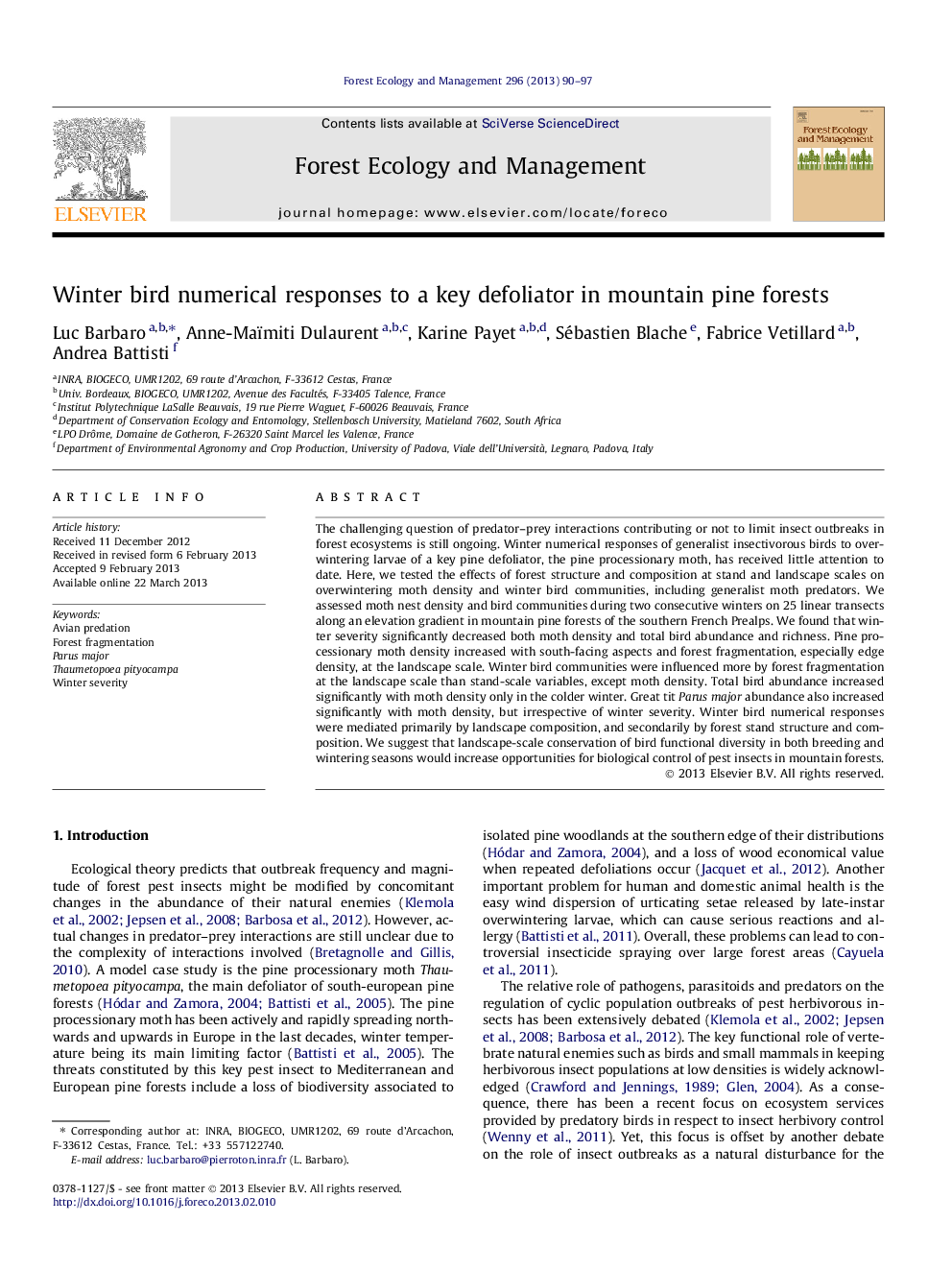| کد مقاله | کد نشریه | سال انتشار | مقاله انگلیسی | نسخه تمام متن |
|---|---|---|---|---|
| 87149 | 159234 | 2013 | 8 صفحه PDF | دانلود رایگان |

The challenging question of predator–prey interactions contributing or not to limit insect outbreaks in forest ecosystems is still ongoing. Winter numerical responses of generalist insectivorous birds to overwintering larvae of a key pine defoliator, the pine processionary moth, has received little attention to date. Here, we tested the effects of forest structure and composition at stand and landscape scales on overwintering moth density and winter bird communities, including generalist moth predators. We assessed moth nest density and bird communities during two consecutive winters on 25 linear transects along an elevation gradient in mountain pine forests of the southern French Prealps. We found that winter severity significantly decreased both moth density and total bird abundance and richness. Pine processionary moth density increased with south-facing aspects and forest fragmentation, especially edge density, at the landscape scale. Winter bird communities were influenced more by forest fragmentation at the landscape scale than stand-scale variables, except moth density. Total bird abundance increased significantly with moth density only in the colder winter. Great tit Parus major abundance also increased significantly with moth density, but irrespective of winter severity. Winter bird numerical responses were mediated primarily by landscape composition, and secondarily by forest stand structure and composition. We suggest that landscape-scale conservation of bird functional diversity in both breeding and wintering seasons would increase opportunities for biological control of pest insects in mountain forests.
Figure optionsDownload as PowerPoint slideHighlights
► Pine processionary moth is a key defoliating-insect of south-european pine forests.
► Generalist bird species showed numerical responses to the moth in winter.
► Forest fragmentation and landscape composition mediated bird responses to the moth.
Journal: Forest Ecology and Management - Volume 296, 15 May 2013, Pages 90–97